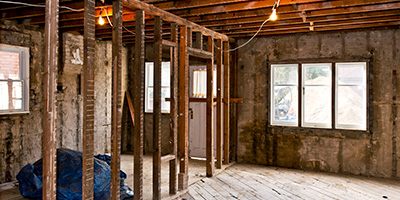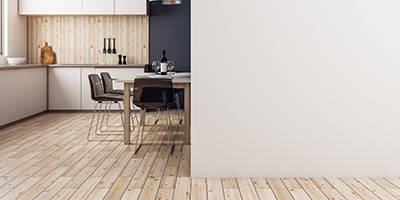The Complete Guide to Buying a Fixer-Upper

Should I Buy a Fixer-Upper?
Thinking of buying a home that needs work? Buying a house and fixing it up is a surefire way to create the home of your dreams — but it can come with its own complications. With our tips for buying a fixer-upper house, you’ll know exactly what to look for, how to prepare for your renovation journey and how to finance your endeavor.
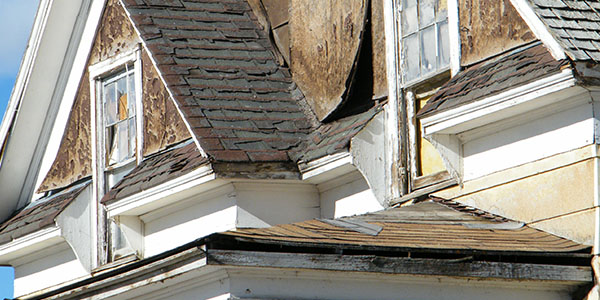
What is a Fixer-Upper?
A fixer-upper home is typically an older house that requires a makeover. This can mean a complete redesign of the home or a few crucial renovations of the existing structure.
There are many different reasons to buy a fixer-upper. Some people buy them as a primary house to live in and customize to their needs. Others might buy it to flip — buying the house and fixing it up to sell to someone else for a profit. Others still might buy one as an investment property to rent out to tenants or use as an Airbnb after renovations.
Regardless of the intention, buying a fixer-upper is a commitment that comes with its own rewards and struggles.
Pros and Cons of Buying a Fixer-Upper
Pros
- Lower purchase price: A fixer-upper home comes with a lower list price and down payment than something that’s brand new. But keep in mind, you may be making up for that low price with renovation expenses.
- Less competition: Not everyone wants to commit to building a home almost from scratch, so there is generally less competition for these properties.
- Customization: When buying a fixer-upper, you have the freedom to personalize your home as you wish, whether you want to remodel the bathroom, renovate the master bedroom, or build a front porch. And you’re the interior designer as well — you choose the colors, flooring, materials, etc.
- Return on investment (ROI): Your ROI is the profit earned from a real estate investment after deducting your expenses. Typically, with fixer-upper homes, your ROI is higher than when buying a home that doesn’t need as much work. Some renovations that can increase your ROI include landscaping, porch or deck additions, and kitchen and bathroom remodels. Learn more about home improvement projects that add value to your home.
Cons
- Expense of renovations: While you may be buying your home at a lower purchase point, the necessary renovations may lead you to break even.
- Unexpected issues: Old homes come with old issues. While ideally your home inspections will uncover any problems, buying a fixer-upper almost always comes with its own surprises, such as mold, water damage or structural issues. Be sure to budget for unknowns as best you can when preparing for your purchase.
- Long-term construction: Living in a fixer-upper is an option, but keep in mind that you’ll be living in a construction zone. And if any unexpected issues do arise, plan on living within the construction for a longer period of time.

“While buying a fixer-upper comes with many advantages, buyers should also be well aware of the risks involved and plan accordingly. For example, a fixer-upper is a great solution if you want to be able to afford more square footage or move into a neighborhood or area that is out of reach pricewise. However, one potential drawback is the stress entailed by an extensive renovation process. Also, repairing and renovating a fixer-upper might take more time and more money than initially anticipated. You might discover problems that you didn’t notice when first inspecting the house, like asbestos or outdated wiring, which will set you back quite a lot in terms of both money and time.”
Andra Hopulele, Senior Real Estate Writer, Point2Homes
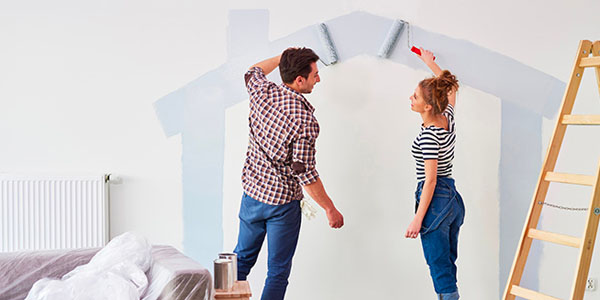
Should I Buy a Fixer-Upper or Build New?
Just like a fixer-upper home, building a new home allows you to customize the house to your needs. However, while a newly built home is move-in ready and requires less maintenance over the first few years, building new has a higher purchase point and can take about seven months or longer to build.
If you choose the fixer-upper route, you may have the option of living in the house as you’re renovating. New construction will require you to live elsewhere while the house is being built. That could mean staying in (and paying for) your current residence, or if your home is already sold, bunking with family or friends.
Also consider where housing might be more affordable and which area matches your lifestyle. New homes are commonly built in subdivisions in the suburbs. These locations can be more expensive than the older, more established neighborhoods where you’re likely to find fixer-uppers. Established neighborhoods are also typically closer to cities.
There’s no right answer — it all comes down to your own capabilities and financial standing. If you’re an extreme DIYer who loves the charm of old houses, buying a home that needs work is for you. But if you have more capital to spend upfront and are looking for a modern home to live in, building new is a better route for you.
Thinking about buying an old home? Here's are some common problems to look out for!
How to Pick a Good Fixer-Upper Home
You need to know what to look for when buying a fixer-upper house. The best way to find fixer-uppers is by searching the Multiple Listing Service (MLS), the official database for all properties for sale in the United States, or going to real estate auctions in areas you’re interested in living. Or if you’re planning to sell, look for a neighborhood with high home values that could provide you with a greater ROI. While searching, consider these three aspects: location, layout and home condition.
Location
Location, location, location. Arguably one of the biggest pros to buying a fixer-upper. Existing homes are typically in established neighborhoods in desirable or up-and-coming locations. A good location includes several factors: proximity, land size, amenities and neighborhood.
You’ll want to research the area before committing to the home. Make sure there are enough amenities in the area and be aware of any major changes the town or city is undergoing in the next few years. Also, you’ll want to pay attention to where in the area the house is situated. Is there a highway next to the house driving the property value down? Is the house located near a body of water, making the home more valuable now and in the future? Do the homes around the property look well taken care of?
If you plan on making your fixer-upper your forever home, make sure your home is in your ideal neighborhood before committing to buying.
Layout
While it’s always possible to knock down walls (as long as they’re not load-bearing walls), you want to look for a home that has a design and layout desirable to your end goal. Knocking down walls and building out your home can be costly, and there are limits. So, to keep your renovation costs down and your ROI high, find a fixer-upper with a layout you like.
Home Condition
A fixer-upper home is going to need renovations, but structural and mechanical renovations are more expensive than cosmetic ones. Pay attention during your home inspection to what aspects of the house need fixing — a strong foundation and up-to-code electrical and plumbing are ideal.
Planning to buy a fixer-upper? Schedule a dumpster now!
5 Tips for Buying a Fixer-Upper
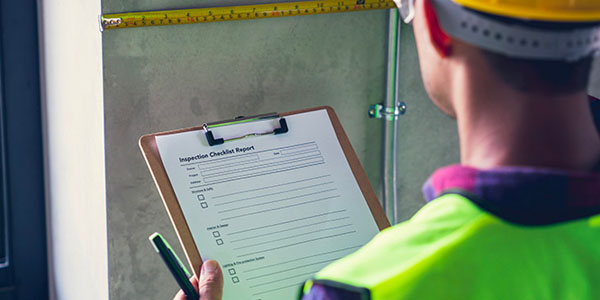
1. Get a Home Inspection
Before touring the house, know what to look for when buying a home and always find a quality home inspector first. The inspector will outline all the problem areas of the home to give you a better idea of what you’re getting into. Important inspections to get for your fixer-upper include Structural Engineering Inspection, Sewer Line or Septic Inspection, Pest Inspection and Roof Certification.
Look up inspectors near you through the American Society of Home Inspectors (ASHI) directory. Make sure to find an inspector who can provide proof of licensing and who has at least three years of full-time experience.
Decide Which Projects You Need to Tackle First
When buying a fixer-upper, you’ll have a list of projects to complete before your home is move-in ready. Your home inspection will help you decide which projects to take on first, such as repairing the foundation or getting rid of asbestos. Cosmetic issues, like painting or refinishing hardwood floors, aren’t essential to the functioning of the house. So, you can tackle them after you’ve moved in.

2. Calculate the Cost of Buying a Fixer-Upper
Without a solid budget intact, it’s quite possible that your bank account will have you seeing red. The cost of repairs adds up fast. When figuring out how to finance your fixer-upper, add up the costs of inspections, any permits you’ll need to apply for before beginning work, quotes from contractors and DIY projects you intend on tackling. Then add 20% to the total cost you’ve calculated to account for any unexpected expenses that may arise during renovations.
Determine if You Need a Permit
In most towns and cities, renovations require permits. Your local government website should provide you with a list of projects that require permits, but typically you’ll need one for:
- Plumbing
- Electrical work
- Room additions
- Garage renovations

Consult Multiple Contractors
Once you’ve determined the scope of work, it’s time to gather quotes from various contractors. To stay within your budget, it’s important to compare costs. Find the most reliable contractor who can fix up your old house on time and to your liking. You might choose to hire one general contractor to oversee the whole project, or you could hire numerous subcontractors and manage them yourself. You might even choose to tackle some of your project list on your own.
Check out our Hiring a Contractor checklist to be sure you’re finding the right fit for your budget and project.

Which Renovations Can You DIY?
Tackling some projects on your own is a great way to save on the cost of buying your fixer-upper. After determining which projects your contractors will handle, decide which renovations you can DIY to save some money. Our Exceedingly Comprehensive Guide to DIY Home Improvement for First-Time Homeowners will teach you the skills needed to tackle projects like installing new flooring, tiling your bathroom and kitchen, and fixing the plumbing.

“It’s very important to limit your intervention and only tackle the projects where you have some experience. Replacing faulty wiring or repairing the roof or the floors can backfire drastically. If you’re a professional in certain areas or you have plenty of experience, DIYing is a great way to save some money. But if you’ve never done this before, try to limit your involvement to minor interventions, such as painting the walls, hanging wallpaper or replacing or installing faucets.”
Andra Hopulele, Senior Real Estate Writer, Point2Homes
3. Set a Realistic Move-In Date
Buying a house and fixing it up can take months to complete. If you plan on living outside of the fixer-upper while you’re renovating, this is an important step for planning where you’ll stay in the meantime. Do you need to budget for hotel or Airbnb accommodations? Will you be staying with friends and relatives?
If you plan on making larger renovations, such as a kitchen remodel, factor in a longer time before your home is move-in ready. Be generous with your time estimation to account for any unexpected delays.
Can You Live in a Fixer-Upper While Renovating?
It’s definitely possible to live in your fixer-upper, but living in the home during renovations will determine which projects to tackle first. When creating your project timeline, prioritize your bedroom so you have a designated safe space away from construction when the larger projects are underway. Before remodeling the kitchen, set up a temporary kitchen by moving your coffee maker and microwave into an area of the house away from the construction. Work with your contractors to keep windows open and fans on whenever fumes are present.
It’s also important to recognize when you need to leave your fixer-upper home. There may be a night or two when you need to be out of the house during electrical or plumbing work. Be sure to budget in a few nights in a hotel or Airbnb, just in case.

4. Decide How to Finance Your Fixer-Upper
Andra Hopulele, senior real estate writer at Point2Homes, says buyers can take out special mortgages aimed at fixer-uppers. Some of the most well-known options include:
Fannie Mae HomeStyle
Buyers can use the Fannie Mae HomeStyle loan to purchase a primary home, vacation home or investment property. This loan requires a 5% down payment and a minimum 620 credit score. Funds for renovations go into an escrow account to pay contractors. The loan can cover almost everything from necessary repairs to landscaping. If you plan on doing some of the work on your own, make sure it doesn’t make up more than 10% of the property’s value.
Freddie Mac CHOICERenovation
The Freddie Mac CHOICERenovation loan requires a 5% down payment and a minimum 620 credit score. You can use it for primary homes, vacation homes and investment properties. The loan covers the purchase of the property, as well as renovations. You must complete all renovations within a year of obtaining the loan.
Federal Housing Administration (FHA) 203(k) Loan
The FHA 203(k) Loan allows you to buy a fixer-upper and finance the repairs, all with one loan. It requires a 3.5% down payment, with a minimum credit score as low as 580. The costs of renovating and buying the home are rolled into one loan.
Veterans Affairs (VA) Renovation Loan
Veterans and active-duty service members can use the VA Renovation Loan to buy a fixer-upper. This loan doesn’t require a down payment or minimum credit score, and is available to active and retired military personnel who meet certain service requirements. The costs of renovating and buying the home are rolled into one loan, and you must use a VA-approved contractor.
5. Create a Strategic Project Timeline
Determine which projects need to happen first and which ones can be saved for last. Be sure to allow enough time for each project to be completed. Set realistic expectations for yourself and your contractors. Also, accept that the timeline might change as the process evolves.

“What are the most important things you want remodeled, and what things are not as big of a deal? Get comfortable with the ‘final appearance’ before you even begin work, or you may end up spending much more than anticipated.”
Brandon Turner, Senior Editor & Community Manager, BiggerPockets


